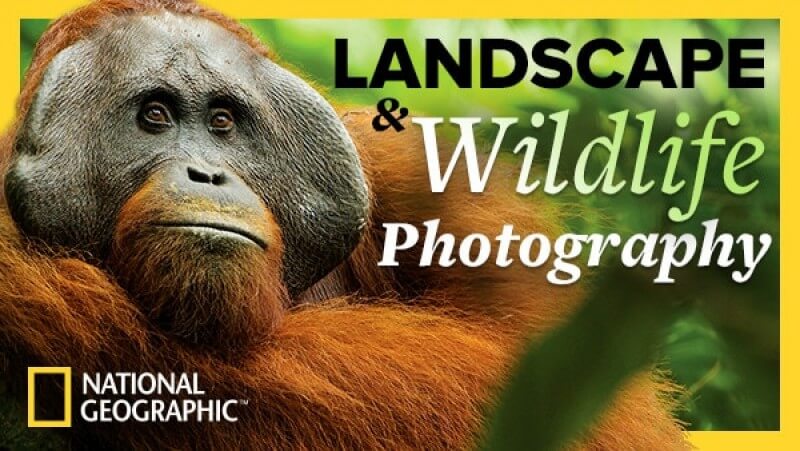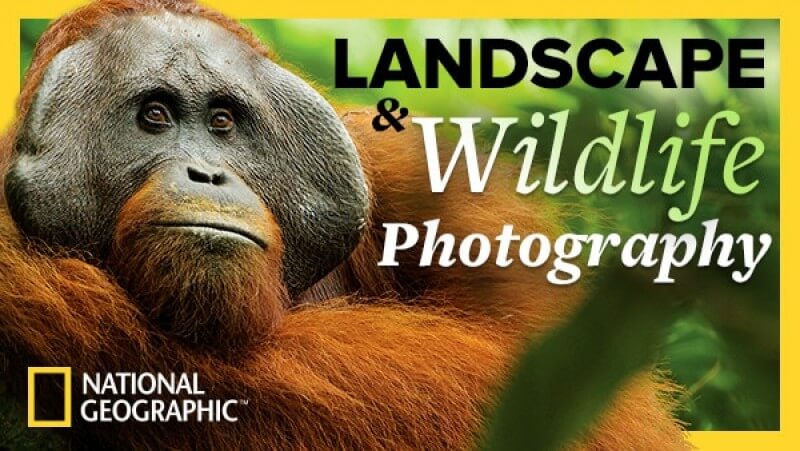The National Geographic Guide to Landscape and Wildlife Photography
$235.00 Original price was: $235.00.$49.40Current price is: $49.40.
Every lecture of The National Geographic Guide to Landscape and Wildlife Photography will inform and inspire you with insider tips File size: 10.58 GB
The National Geographic Guide to Landscape and Wildlife Photography
It could be a silent expanse of Artic wilderness. An ancient tree in the woods. An elusive tiger out on the hunt. A hummingbird flitting along your back porch. Whatever their subject, few photographs as are ethereal and soul-stirring as those that capture landscapes or wildlife.
Hide Full Description
Our world is filled with so much eye-catching beauty and intrigue that it demands to be photographed. The only problem: the perfect landscape and wildlife shot is so tricky that if you don’t know how to shoot what you’re seeing at the right time and the right moment, you’re likely to let these natural wonders pass you by.
In fact, it often seems like some photographers are simply blessed with a preternatural ability to capture these subjects in their lenses. But even the world’s greatest landscape or wildlife photographers are operating from a learnable set of skills, techniques, tricks, tools, and perspectives to get their award-winning photos of shimmering sunsets, snowcapped mountains, curious monkeys, and vibrant fish. Knowing how to work with natural light, how to move quickly and quietly, how to play with depth of field and perspective, how to research your subjects, how to see the world like a professional photographer: these and other insights can help photographers at all levels take smarter, sharper photos—whether you’re on a short walk through your backyard or on a grand trip to some of the most unique regions on the planet.
Who better to explain these skills and insights than expert photographers from National Geographic, whose trained eyes are responsible for some of the most powerful images of the natural world? In The National Geographic Guide to Landscape and Wildlife Photography, National Geographic photographers Michael Melford and Tim Laman reveal their stories and secrets about what makes for great landscape and wildlife photography. Taking you around the world from the comfort of your own home, they’ve created 24 visually-rich, adventure-packed lectures that lay bare the art of seeing that’s essential to taking unforgettable photos of desert cliffs, penguin colonies, dramatic waterfalls, birds of paradise, and so much more.
See Landscapes like an Expert
Cameras are powerful tools, but they don’t take pictures by themselves.
“You have to imagine the photograph you want, frame it, and make the image,” Mr. Melford says. “In other words, the most important tool for photography is not your camera but your eye, your vision, your mind.”
In the first 12 lectures of The National Geographic Guide to Landscape and Wildlife Photography, you’ll travel alongside Mr. Melford as he ventures out into the field in search of moments in natural time that can’t be missed. Taking you through parks, forests, deserts, and preserves, he reveals how to look at and shoot everything from frozen ponds and rushing waterfalls to star-filled skies and desert dunes.
As you comb through his wide-ranging portfolio of landscape photographs, you’ll discover just what it takes to see landscapes with a seasoned photographer’s eye. You’ll learn:
which lenses are best for capturing particular vistas, including the 16-35mm zoom lens, which can highlight the wide expanse of a landscape as well as smaller spaces;
how photographers research the landscapes they want to capture before they start shooting (including making quick “sketches” on their mobile phones);
how to play with natural colors, including slowing down the shutter speed on windy, overcast days so the colors around you mix and blur together;
how simple tools in common editing programs can help you recapture the magic of what you originally saw out in nature; and
how to cultivate your own style so that your landscape photos speak to how you, not others, see the world.
Follow Wild Stories of Wild Animals
In the second half of this fascinating course, Mr. Laman introduces you to the unique challenges of telling visual stories about wildlife and the techniques required to do it well.
Imagine how impossible it is to get animals to sit still for a photo—especially in their natural habitats. So how does a wildlife photographer get the job done?
Get immediately download The National Geographic Guide to Landscape and Wildlife Photography
Each of Mr. Laman’s lectures in The National Geographic Guide to Landscape and Wildlife Photography is crafted like a photographic expedition, in which he recounts what it’s like to venture out into the world (often in uncomfortable situations) to get great images of animals.
Embark on a trip to the Galapagos Islands, where you’ll find out how a wildlife photographer captures the daily habits of albatrosses and sea lions.
Visit the forests of Borneo for a photo series on orangutans that will open your eyes to how photos can tell the story of animals in their natural environment.
Travel to Bangladesh through the murk and tangle of mangrove forests in the Sundarbans and set up camera traps in hopes of finding elusive tigers.
Plunge under the water in search of the perfect shot that captures the diversity of colorful fish living in the nooks of crowded coral reefs.
Learn the art of patience, and the craft of working with remote cameras, as you search for fascinating tropical birds like the Greater Bird-of-Paradise.
Whether photographing at night or during the day, on foot or in a motor vehicle, in forest shade or full sun, Mr. Laman and his work are sure to inspire you to get out there and start thinking about wildlife in new ways.
Learn from a Dynamic Team of Photographers
Every lecture of The National Geographic Guide to Landscape and Wildlife Photography will inform and inspire you with insider tips to keep in mind any time you use a camera to capture the world around you.
When taking flat landscape shots, try altering your composition with leading lines, frames within frames, and repeating patterns to add a sense of drama.
Become a student of natural history. By knowing how species act in their natural environment, you can anticipate the peak moment of their behavior—and capture it.
When shooting up at the sky, try turning on your camera’s polarizing filter, which will take the haze out of your pictures and turn the sky a bright blue.
If you’re photographing nocturnal animals, pay attention to the shadows created by your camera flashes. Focus on unique adaptations, such as large eyes or ears.
By bringing Mr. Melford and Mr. Laman together, these lectures do more than just lay bare the secrets of two equally challenging types of photography. They give you complementary ways to look at the natural world.
A 30-year veteran of National Geographic whose landscape photos have been recognized by prestigious organizations, including the International Center of Photography, Mr. Melford takes an artistic approach to photography. Mr. Laman, a regular contributor to National Geographic magazine for almost 20 years, opts for a scientific approach, documenting endangered species and biodiversity hotspots.
The photography on exhibit in these lectures is enough to make The National Geographic Guide to Landscape and Wildlife Photography one of the most visually captivating Great Courses you’ll experience.
And with this dynamic team’s stories and lessons, you’ll come away with empowering ideas and approaches the next time you find yourself with a camera in the perfect spot at the perfect time of day, or up-close-and-personal with a curious animal.
Be the first to review “The National Geographic Guide to Landscape and Wildlife Photography” Cancel reply
Related products
Business & Marketing
Personal Development
Personal Development
Personal Development
Personal Development
Personal Development
Personal Development
Personal Development
Tara Stiles – Your Daily Yoga Practice with Tara – 30 Minutes – 2018













Reviews
There are no reviews yet.